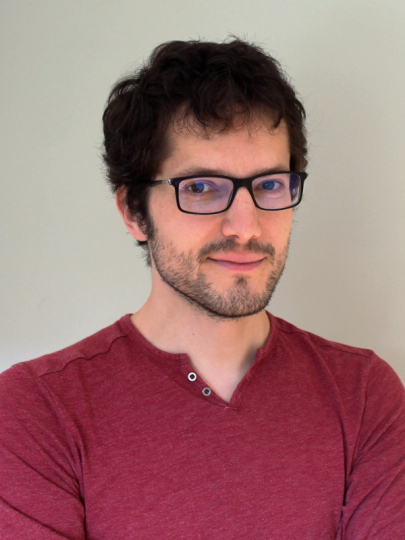Antoine CoulonDynamique du noyau - CNRS / Institut Curie / Sorbonne Universités
Mes recherches
My research focuses on understanding spatiotemporal aspects of nuclear organization and gene expression, using techniques from computational modelling to live-cell microscopy. With an engineering background in computer science, my PhD at University of Lyon consisted in modeling spatiotemporal processes underlying transcriptional regulation (target site search by a transcription factor, dynamics of chromatin at gene promoters). For my postdoc at the National Institutes of Health (NIH), USA, I transitioned to experimental biology and used single-molecule imaging techniques to observe real-time transcriptional activity of single genes. After being recruited by the CNRS in 2015, I started my independent research group in 2017 at Institut Curie, with the support of the ATIP-Avenir program, co-funded by the Plan Cancer. In my group, we are now combining single-molecule imaging technologies and physical/mathematical analysis and modeling techniques to study how the organization of the genome in the nuclear space relates to the regulation of its expression.
Mon projet ATIP-Avenir
Spatio-temporal Organization and Expression of the Eukaryotic Genome
The eukaryotic genome is highly organized in both space and sequence. Preferred positions in the nucleus are observed from whole chromosomes to single genes. This arrangement remodels through differentiation and development, and is often altered in cancer. Gene position/relocation is tightly linked to expression: co-regulated genes tend to cluster spatially even if distant in sequence and transcriptional noise patterns suggest domain-wide regulatory mechanisms. Hence, many lines of evidence indicate a complex spatio-temporal coupling between co-regulated genes.
However, most experimental techniques give an incomplete picture. Microscopy techniques using fixed cells only provide a static snapshot of position and expression status of genes. Live-cell imaging usually assesses the movement of individual loci but without any transcriptional information. Population-levels assays miss the stochastic and single-cell aspect of the problem. A true understanding of these mechanisms in four dimensions is still missing, giving a rather correlative picture where causes and consequences remain for the most part unknown.
Here, I propose an original interdisciplinary approach combining cutting-edge live-cell imaging, signal theory tools and physical modeling to study the spatio-temporal coupling of co-regulated transcription. We will use single-molecule microscopy techniques to visualize for the first time in living cells the transcriptional kinetics and relative motion of pairs of single genes (MS2 and PP7 RNA labeling), including both artificial transgenes and endogenous estrogen-responsive genes. Using innovative signal-theory data analysis techniques and physical modeling approaches, we will interpret the data at various spatio-temporal scales in terms of molecular mechanisms and propose validation experiments to dissect causes and consequences. We expect our approach to provide an unprecedented picture of the spatio-temporal mechanisms underlying transcriptional regulation.
Antoine Coulon est également lauréat ERC Starting Grant 2017
